Assisted Living in Minnesota
Seniors who appreciate cultural diversity, opportunities for outdoor recreation throughout four distinct seasons and access to affordable, quality health care may find that Minnesota is the perfect place to retire. Currently, adults aged 65 and older make up 15.9% of the state's population of approximately 5.6 million people. According to projections from the Minnesota State Demographic Center, the Land of 10,000 Lakes is expected to experience rapid growth in this segment of the population in the near future, with an increase of over half a million seniors by 2035.
Current data from the Kaiser Family Foundation shows that about 70% of Americans aged 65 and older require long-term services and supports. When comparing assisted living costs against the national median of $4,051, Minnesota's average of $3,800 per month can make the state an even more attractive option for seniors seeking this type of long-term care.
This guide provides cost data for assisted living across Minnesota, comparisons with the cost of other senior care options and a look at what seniors pay for this type of care in surrounding states. It also offers information about available financial assistance, free and low-cost resources and state rules and regulations for assisted living.
SeniorAdvice's Guide to Assisted Living in Minnesota
The SeniorScore is a livability index that uses more than 100 variables to assess an area's general quality of life, recreation and leisure opportunities, health and safety amenities and economic factors, as they relate to older adults. Minnesota received a score of 72, which puts it right on par with the national average.
SeniorScore™ for Minnesota
 The SeniorScore™ is calculated based on over 100 variables, some of which are shown below. The final score is curved based on a linear curving method. For More info visit senioradvice.com/seniorscore.
The SeniorScore™ is calculated based on over 100 variables, some of which are shown below. The final score is curved based on a linear curving method. For More info visit senioradvice.com/seniorscore.
- Minnesota's SeniorScore™ of 72 is the same as the national average of 72.
- Minnesota has high access to Medicare registered healthcare providers.
- Minnesota has an average number of hospitals within the state.
- Minnesota has a high number of senior living facilities within the state.
- Minnesota has a high number of home healthcare providers operating in the state.
- The average life expectancy in Minnesota is 81.1, compared to the national average of 78.6.
- Minnesota has a high overall property crime rate compared to national averages.
- Minnesota has a high overall violent crime rate compared to national averages.
- 30% of the population in Minnesota are seniors, compared to 29% nationally.
- Minnesota has 467 golf courses in the state.
- Minnesota has a high number of municipal parks throughout the state.
- Minnesota has 1,947 churches in the state.
- The property taxes average 2.84% of total income in Minnesota, which is higher than the national average of 2.79%.
- The property taxes average 1.00% of property value in Minnesota, which is lower than the national average of 1.09%.
- The average sales tax in Minnesota is 7.38%, which is higher than the national average of 6.97%.
- The average state income tax in Minnesota is 4.79%, which is significantly higher than the national average of 3.38%.
- The mean household income in Minnesota is $76,117, which is significantly higher than the national average of $64,580.
- Minnesota's median household income is $61,440, which is significantly higher than the national average of $51,560.
- The average per capita income in Minnesota is $30,318, which is significantly higher than the national average of $25,611.
- Assisted living costs in Minnesota average $39,079 per year, which are lower than the national average of $42,700.
- Nursing home costs in Minnesota average $92,321 per year, which are lower than the national average of $92,481.
- Costs for adult daycare in Minnesota average $18,029 per year, which are higher than the national average of $17,931.
- Costs for home healthcare in Minnesota average $50,653 per year, which are higher than the national average of $46,197.
- The unemployment rate is about 6.92% in Minnesota, which is significantly lower than then national rate of 8.26%.
- The overall cost of living in Minnesota is high compared to national averages.
- 0.45% of the senior population in Minnesota are financially responsible for at least one grandchild.
- Minnesota receives an average of 28.2 inches of rain per year.
- Minnesota has an average annual temperature of 42.7 degrees fahrenheit.
- Minnesota has an average low temperature of 31.3 degrees fahrenheit.
- Minnesota has an average high temperature of 53.0 degrees fahrenheit.
- Minnesota has an average population density of 487 people per square mile.
- Minnesota has a very high public school quality ranking.
- Minnesota has a high public school safety ranking.
- Minnesota has a high graduation rate of 91.54%.
Minnesota received its highest score of 67 for Health & Safety, thanks to ease of access to Medicare-registered health care providers and the numerous senior living facilities and home health care providers within the state. Additionally, life expectancy for Minnesotans exceeds the national average by 2.5 years. Metrics that negatively affect this score are the state's average number of hospitals and higher-than-average crime rates.
The plentiful statewide recreation and leisure opportunities account for the score of 64 earned in this category. Minnesota has a high number of municipal parks for seniors to enjoy, as well as 467 golf courses. The 1,947 churches in the state offer a wide range of choices for those who wish to practice their faith. Minnesota also garnered a 64 for its general quality of life, due in part to its average high and low temperatures and rainfall. The state's population density is just 487 people per square mile, and it ranked highly for high school safety and graduation rates.
Various economic factors influence Minnesota's lowest score of 61 for finances. Property, income and sales tax rates are higher than the nationwide averages, but household and per capita income levels are as well. Other metrics that benefit seniors are the state's lower annual costs for assisted living and relatively affordable health care compared to U.S. averages.
Top Assisted Living Facilities in Minnesota
Located near the Greater Eastside area of Maplewood, Minnesota, Maplewood Care Center is a 149 bed senior care facility. The neighboring area is densely populated, with around 32,000 individuals living in the zip code of 55109. It is ...
Langton Place is located near by the Waite Park area of Roseville, Minnesota. It is a 119 room senior housing community. The facility is in a generally middle class area, with an average per-family income of $63,706. ...
Shirley Chapman Sholom Home East is a 108 unit senior housing community. It is situated within the West 7th area of St Paul, Minnesota. The facility is in a predominantly middle income area, with a median household income ...
Located at 1011 Feltl Court, St. Therese Southwest is a senior housing community in Hopkins, Minnesota. With approximately 25,000 individuals living in the 55343 zip code, the neighboring area has a dense population. It is a predominantly middle ...
St. Mark's Living is a 61 unit senior community. It is located at 400 15th Avenue SW in Austin, Minnesota. With a median per-household income of $45,141, the facility is in a primarily middle income area. ...
Located at 5430 Boone Avenue North in New Hope, Minnesota, North Ridge Health and Rehab is a 351 unit skilled nursing facility. The community is in a predominantly middle class area, with an average per-household income of $47,695. ...
Located at 500 SE 1st St in Faribault, Minnesota, St. Lucas Healthcare Community is a 109 bed nursing home facility. The facility is in a mostly middle income area, with an average per-household income of $52,211. It is ...
The Colony at Eden Prairie is a 25 unit senior care facility situated in Eden Prairie, Minnesota. The encompassing area has an average population density, with roughly 15,000 individuals living in the 55344 zip code. With an average ...
Ecumen North Branch is a 67 bed senior care facility located in North Branch, Minnesota. The facility is in a primarily middle income area, with a median per-family income of $59,780. It has an average population density, with ...
Situated in the Highland area of the city, Graham Place Senior Apartments is a senior care facility serving St Paul, Minnesota. The surrounding area has a dense population, with about 25,000 residents in the 55116 zip code. It ...
LB Homes is a 107 bed senior care facility situated in Fergus Falls, Minnesota. The surrounding area has an average population density, with approximately 20,000 individuals residing in the 56537 zip code. It is a generally middle class ...
Walker Methodist Health Center is a 330 unit nursing facility. It is located in the Calhoun neighborhood of Minneapolis, Minnesota. With approximately 13,000 people residing in the 55409 zip code, the surrounding area has a medium-density population. ...
Situated in the Waite Park neighborhood of St Anthony, Minnesota, St Anthony Health Center is a 150 bed skilled nursing facility. The facility is in a largely middle income area, with a median per-household income of $48,599. With ...
St. Gertrude's Health and Rehabilitation Center is located at 1850 Sarazin St in Shakopee, Minnesota. It is a 105 unit nursing care facility. The neighboring area is heavily populated, with approximately 41,000 individuals living in the zip code ...
Bethel Healthcare Community is a 131 unit nursing care facility situated within the Summit-University neighborhood of St Paul, Minnesota. With a median per-household income of $45,325, the facility is in a largely middle class area. It has an ...
Located at 901 9th Street North in Virginia, Minnesota, Essentia Health - Virginia Care Center is a 90 bed nursing home facility. The facility is in a predominantly middle class area, with a median per-family income of $36,290. ...
Lake Ridge Care Center of Buffalo is a 63 unit senior housing facility. It is located at 310 Lake Blvd in Buffalo, Minnesota. The surrounding area is heavily populated, with approximately 24,000 individuals residing in the 55313 zip ...
The Homestead at Anoka is located at 3000 4th Ave in Anoka, Minnesota. It is a 120 bed senior care facility. With an average household income of $68,027, the facility is in a generally middle class area. ...
Edina Care and Rehabilitation Center is a 125 unit skilled nursing facility. It is situated within the Armatage area of Richfield, Minnesota. The facility is in a predominantly middle income area, with an average family income of $51,458. ...
Located at 9889 Penn Avenue South in Bloomington, Minnesota, Presbyterian Homes of Bloomington is a 98 room senior community. With an average per-household income of $64,362, the facility is in a predominantly middle class area. It has a ...
The Cost of Assisted Living in Minnesota
At $3,800 per month, the average cost for assisted living in Minnesota is $251 lower than the national median of $4,051. The average costs in surrounding states vary in comparison, with some being higher and others lower. The Iowa average of $4,078 is $278 higher, while Wisconsin's average monthly rate of $4,350 is $550 more expensive. Seniors in South Dakota pay $3,500 per month, which is $300 less, and those in North Dakota pay just $3,405, for a savings of $395 compared to their peers in Minnesota.
- Minnesota: $3,800
- United States: $4,051
- South Dakota: $3,500
- North Dakota: $3,405
- Iowa: $4,078
- Wisconsin: $4,350
The Cost of Assisted Living in Minnesota's Top Cities
Assisted living costs in Minnesota vary considerably depending upon location. Costs are highest in the state's largest metropolitan area, Minneapolis, where the average is $4,782 per month. Residents of other cities pay significantly less. The average cost in Duluth is $3,800, which is on par with the statewide median. Average assisted living rates in St. Cloud and Mankato are even lower and differ by just $107 per month, at $3,551 and $3,444, respectively. Seniors in Rochester pay an average rate of only $2,983 per month, which is the lowest cost among the state's most populous cities.
- Minneapolis: $4,782
- Rochester: $2,983
- Duluth: $3,800
- St. Cloud: $3,551
- Mankato: $3,444
Senior Care Cost Comparison in Minnesota
Senior care costs in Minnesota span a wide range depending on the level of care required and the setting. At an average cost of $3,800 per month, assisted living is one of the most affordable types of care available. Only adult day care costs less, with an average of just $1,820 per month. Costs for in-home care and home health care services are significantly higher, averaging $5,529 and $5,815 per month, respectively. With a median monthly cost of $10,076, skilled nursing home care is almost three times more expensive than assisted living, although both are offered in a residential setting.
- Assisted Living: $3,800
- In-Home Care: $5,529
- Home Health Care: $5,815
- Adult Day Care: $1,820
- Nursing Home Care: $10,076
Financial Assistance for Assisted Living in Minnesota
MA Elderly Waiver
Phone Number: (800) 333-2433
Website: mn.gov/dhs/people-we-serve/seniors/services/home-community/programs-and-services/elderly-waiver.jsp
Minnesota Medicaid offers the Elderly Waiver, which can help eligible seniors pay for assisted living services as an alternative to nursing home admission. Depending on an individual's specific care needs, the program may cover the cost of case management, transition expenses, personal care assistance, occasional skilled nursing services, nonmedical transportation and medical equipment and supplies. The waiver does not cover room and board fees. This is not a Medicaid entitlement program, so participation is capped and there may be a waiting list to receive services.
To qualify, applicants must be aged 65 or older, or disabled if younger, meet the Medicaid program's financial eligibility requirements and be assessed as requiring a nursing home level of care.
Community Access for Disability Inclusion Waiver
Phone Number: (651) 431-4300
Website: mn.gov/dhs/people-we-serve/people-with-disabilities/services/home-community/programs-and-services/cadi-waiver.jsp
The Minnesota Department of Human Services Disability Services Division administers the CADI Waiver program, which is designed to provide eligible disabled individuals with an alternative to moving to a nursing facility. Program enrollees can receive assistance accessing housing in a community setting, such as an assisted living facility, as well as a range of other benefits, including case management, overnight supervision, therapy services, enhanced personal care and necessary equipment and supplies.
To qualify for the CADI Waiver, applicants must be certified as disabled and need the level of care normally provided in a nursing home. They must also meet the financial guidelines for Medicaid coverage and be aged 64 or younger when applying. Enrollees may remain in the CADI program after their 65th birthday or choose to transition to the Elderly waiver program.
Minnesota Supplemental Aid
Phone Number: (651) 431-2000
Website: mn.gov/dhs/people-we-serve/adults/economic-assistance/income/programs-and-services/msa.jsp
The Minnesota Department of Human Services administers the Supplemental Aid program that provides eligible low-income residents with a monthly cash benefit that may help defray the cost of assisted living services.
Individuals receiving Supplemental Security Income benefits automatically qualify for the program. Those who cannot qualify for SSI due to excess income may still be eligible for SA benefits if they are aged 65 or older, are blind, deemed disabled by the SSA or have no more than $10,000 in assets.
Minnesota Housing Support Program
Phone Number: (651) 431-2000
Website: mn.gov/dhs/people-we-serve/adults/economic-assistance/housing/programs-and-services/housing-support.jsp
The Housing Support program administered by the Department of Human Services offers funding to pay room and board fees in a licensed housing establishment, so low-income residents can avoid homelessness or admission to a nursing home. The program also offers supplemental benefits that may help cover the cost of additional services provided in an assisted living facility.
Disabled adults and seniors aged 65 and older can qualify for the HS benefit if they are receiving or eligible to receive SSI or Minnesota General Assistance and have $10,000 or less in assets. Those who are over the income limit for the SSI and GA programs can still qualify if their earnings are below the current HS room and board benefit payment.
Minnesota Assisted Living Rules and Regulations
At the present time, assisted living facilities are not licensed as such in Minnesota. Until a new assisted living licensing law takes effect in 2021, the state requires that facilities register as housing with services establishments and obtain a Class A or F home care agency license through the Minnesota Department of Health (MDH). Alternatively, establishments may contract with a licensed home care agency to provide care services to residents. To ensure compliance with state regulations, MDH staff conduct routine surveys of all establishments, as well as unscheduled inspections in response to complaints. The following table offers an overview of the current state guidelines for AL facilities that meet the above requirements.
Scope of Care | To advertise as an assisted living facility, housing with services establishments must make available or provide residents with health-related services by a Class A or F home care agency, including medication management, assistance with three or more activities of daily living and regular RN assessments. The establishment must also provide additional services, including two prepared meals per day, weekly housekeeping and laundry services, transportation assistance and periodic social activities. |
Care Plan Requirements | Housing with services establishments must arrange an RN assessment of each prospective resident's cognitive and physical needs and create a care plan or service agreement for the individual before they move in or sign a contract with the facility. |
Medication Management Requirements | Facilities must arrange assistance with medication self-administration or the administration of medications, depending on a resident's needs. An RN must provide written instructions for medication being administered, and staff administering medications must demonstrate their competence in following these instructions. |
Staff Screening Requirements | Owners, employees and volunteers of housing with services establishments must pass a criminal background check. Those who work directly with residents must provide a signed statement disclosing any criminal convictions, excluding traffic violations. |
Staff Training Requirements | Facility administrators and managers must complete 30 hours of relevant continuing education every two years. Supervisors must complete four hours of training on state-mandated topics during their first 160 working hours after being hired, and another two hours every 12 months. Staff who work directly with residents must complete an initial orientation covering required home care topics. Those who perform delegated nursing care are required to complete prescribed core training and pass competency evaluations. All unlicensed personnel must complete eight hours of continuing training on home care topics every 12 months. |
Medicaid Coverage | Minnesota Medicaid covers care and support services received in assisted living facilities through its Elderly and CADI waiver programs. Room and board fees are not paid for by these programs, and these costs are the responsibility of the resident. |
Reporting Abuse | Suspected neglect, abuse or mistreatment of an assisted living resident can be reported 24/7 by calling the Minnesota Adult Abuse Reporting Center toll free at (844) 880-1574. |
Free Assisted Living Resources in Minnesota
Senior LinkAge Line
A free service available to elderly Minnesotans and their families, the Senior LinkAge Line is manned by trained specialists who can connect seniors to aging-related resources. Callers can receive counseling about their long-term care options, including assisted living, as well as information about financial assistance programs that may help pay for their care.
Office of Ombudsman for Long-Term Care
Staff and volunteers of Minnesota's Office of Ombudsman for Long-Term Care act as advocates for all senior Minnesotans to help resolve concerns with assisted living facilities and other care providers. The goal of each ombudsman advocate is to protect residents' rights and ensure their well-being and safety.
Healthy Aging Classes
Healthy aging classes are offered in communities across the state to help seniors improve their balance to prevent falls, manage chronic conditions, such as diabetes and arthritis, and achieve a healthier lifestyle overall. Classes are free of charge and available to all Minnesotans aged 60 and over.
Minnesota Agencies
Minnesota Board on Aging
Address: 540 Cedar Street, St. Paul, MN 55164
Phone Number: (651) 431-2500
Website: mn.gov/board-on-aging
The Minnesota Board on Aging exists to ensure that older adults throughout the state have access to needed resources to maintain their independence and quality of life. The MBA directs state and federal funding and grants to local organizations, such as Minnesota's Area Agencies on Aging, that can help seniors access assisted living services. The board also works to enhance public awareness and research for aging-related issues.
Area Agencies on Aging in Minnesota
Area Agencies on Aging are nonprofit organizations established by the state government of Minnesota to provide residents with information and access to local aging-related resources. There are seven AAAs located across the state, and each one is dedicated to assisting adults aged 60 and older and their families in its specific geographic region. One of the many services AAAs offer is long-term care counseling to help seniors learn about the available options, such as assisted living.
Veteran Affairs Offices in Minnesota
The Department of Veterans Affairs offers pension and benefit programs that may help Minnesota senior veterans and their surviving spouses pay for assisted living services. Staff at the St. Paul Regional Benefits office can provide information about available programs, as well as assistance with the application process for those who are eligible to receive benefits.
Social Security Offices in Minnesota
Social Security retirement benefits and the Social Security Administration's Supplemental Security Income program offer valuable funding sources for eligible seniors, which can help cover some of the costs of assisted living. Seniors can apply for benefits at one of the Social Security offices located throughout Minnesota.
Other Cities in Minnesota


 The SeniorScore™ is calculated based on over 100 variables, some of which are shown below. The final score is curved based on a linear curving method. For More info visit
The SeniorScore™ is calculated based on over 100 variables, some of which are shown below. The final score is curved based on a linear curving method. For More info visit 

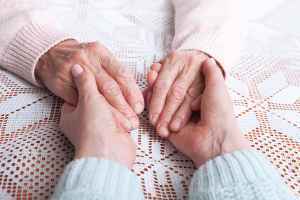


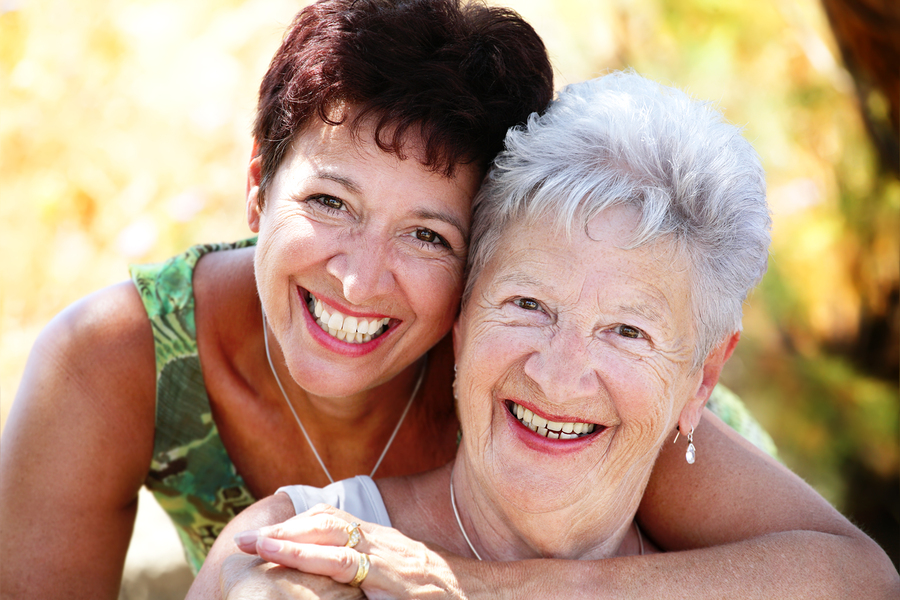






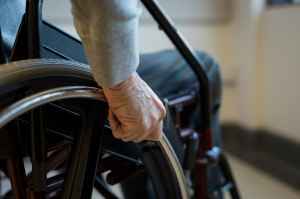

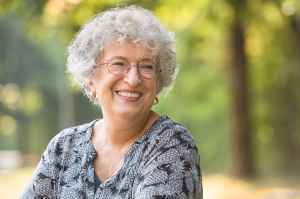



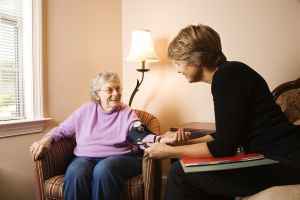
 Your Information is Processing
Your Information is Processing